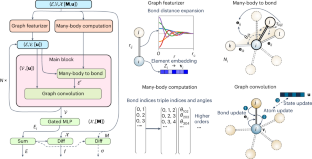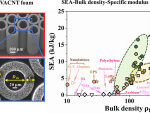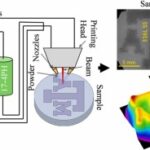2022-11-28 カリフォルニア大学サンディエゴ校(UCSD)

・ UCSD が、既存・新規のあらゆる材料の原子構造と動力学的特性をほぼ瞬時に予測する AI アルゴリズム、「M3GNet IAP (Interatomic potentials)」を開発。
・ M3GNet IAP を利用し、3,100 万種類を超える仮想結晶構造のデータベース「matterverse.ai」を展
開。同データベースは、卓越した特性を備えた新規技術材料の特定を支援する。
・ 材料特性を決める原子配列を特定する既存のアプローチは、非常に高額か多くの元素に無効。Google DeepMind 開発のタンパク質構造予測 AI アルゴリズムの AlphaFold のような、材料予測に向けたアルゴリズムが必要。
・ 本研究では、グラフニューラルネットワーク(GNN) と多体相互作用を組合せ、周期表上のあらゆる元素を網羅する、高精度でユニバーサルな深層学習(DL)アーキテクチャを構築。従来手法で発生する組合せ爆発をグラフの利用により回避し、材料の完全な複雑性を提示する。
・ Materials Project (物質材料の第一原理計算結果のデータベース)で過去 10 年間に収集した、材料のエネルギー、応力や強度の膨大なデータベースを使用してモデルを訓練し、あらゆる原子の集合によるエネルギーや強度を予測する M3GNet IAP を完成させた。
・ matterverse.ai データベースに含まれる 3,100 万種類の材料のうち、100 万種類を超える材料が安定していると予測。材料数に加え、過去に開発したマルチフィデリティーアプローチによるデータサイズの小さな高価値特性を含む、機械学習予測特性の数も大幅に拡大する予定。
・ M3GNet IAP は、例えば材料中のリチウムイオン電池の電極や電解質でのリチウムイオン伝導性の高精度の予測のような、構造緩和以外の材料の動的シミュレーションや特性予測での利用も可能。
・ 2022 年 2 月の学術論文のプレプリント版発表以来、学界・産業界が関心を寄せており、商用の材料シミュレーションパッケージへの M3GNet IAP の統合を計画。オープンソースの Python コードをGithubにて公開している。
・ 本研究への資金は Materials Project プログラム下、米国エネルギー省(DOE) 科学局、基礎エネルギー科学局(BES)および材料科学・工学部が主に提供し、LG エナジーソリューションが Frontier Research Laboratory Program を通じて一部提供した。
URL: https://today.ucsd.edu/story/nanoengineers-develop-a-predictive-database-for-materials
<NEDO海外技術情報より>
関連情報
mateirals virtual lab
Matterverse.ai and M3GNet Universal IAP
URL: https://materialsvirtuallab.org/#content
関連情報
Nature Computational Science 掲載論文(フルテキスト)
A universal graph deep learning interatomic potential for the periodic table
URL: https://materialsvirtuallab.org/pubs/10.1038_s43588-022-00349-3.pdf
Abstract
Interatomic potentials (IAPs), which describe the potential energy surface of atoms, are a fundamental input for atomistic simulations. However, existing IAPs are either fitted to narrow chemistries or too inaccurate for general applications. Here we report a universal IAP for materials based on graph neural networks with three-body interactions (M3GNet). The M3GNet IAP was trained on the massive database of structural relaxations performed by the Materials Project over the past ten years and has broad applications in structural relaxation, dynamic simulations and property prediction of materials across diverse chemical spaces. About 1.8 million materials from a screening of 31 million hypothetical crystal structures were identified to be potentially stable against existing Materials Project crystals based on M3GNet energies. Of the top 2,000 materials with the lowest energies above the convex hull, 1,578 were verified to be stable using density functional theory calculations. These results demonstrate a machine learning-accelerated pathway to the discovery of synthesizable materials with exceptional properties.




